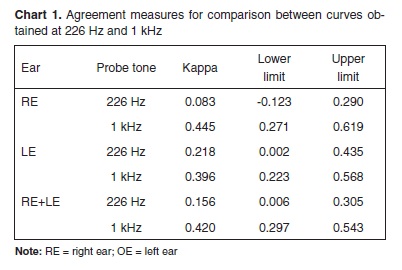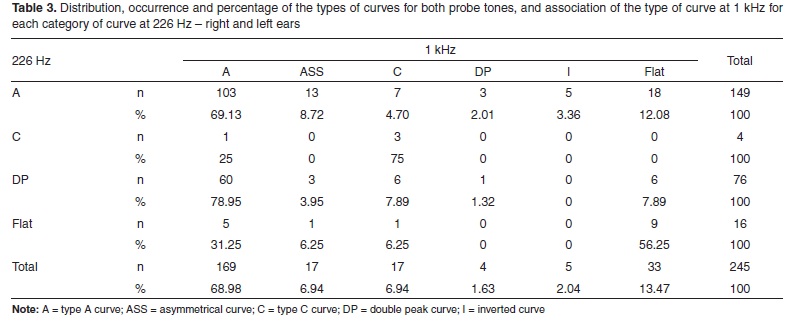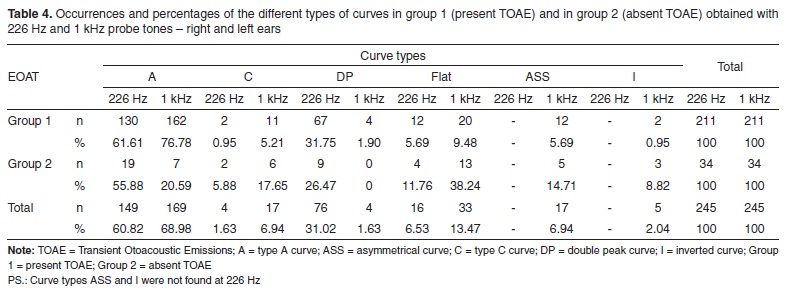PURPOSE: To analyze the results of 226 Hz and 1 kHz tympanometry in infants under six months of age, and to relate these results with age and with the results of Transient Evoked Otoacoustic Emissions (TOAE). METHODS: The sample consisted of 142 infants with risk indicators for hearing loss, who had passed the Automated Brainstem Auditory Evoked Potential (A-BAEP). Subjects were submitted to 226 Hz and 1 kHz tympanometry and also to hearing screening with TOAE and A-BAEP. Infants were divided into age groups (0-90 days old and 91-180 days old), and into groups 1 and 2, according to the presence or absence of TOAE, respectively. The tympanometric curves were classified into types A, Flat, C, Double Peak (DP), Asymmetrical (ASS) and Inverted (I), and also as normal or altered. RESULTS: It was analyzed 245 ears. Type A tympanograms were predominant in both probe tones and in both groups. When tympanometric curves were analyzed according to age, it was verified that type A presented higher occurrence, followed by the type DP in infants younger than 90 days, and by the type Flat in infants older than 90 days. The 1 kHz tympanometry presented sensitivity of 74.01%, and specificity of 83.94%; the 226 Hz tympanometry presented sensitivity of 24.00% and specificity of 90.80%. CONCLUSION: The probe tone of 1 kHz had higher sensitivity to identify middle ear alterations, and therefore is the most appropriate to evaluate infants under six months of age.
Hearing; Acoustic impedance tests; Middle ear; Infant; Spontaneous otoacoustic emissions







